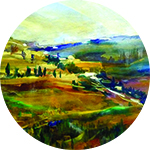The New You

Impart the values of the past with the innovations of the present

Are you the same person you were ten years ago?
Scientifically speaking, the answer is a definite no. The cells in your arms and legs today are not the same cells of ten years ago. The blood coursing through your arteries and veins today is not the same blood as ten years ago.
While the rate at which cells replace themselves may vary from a few days to a few years, one fact remains true: The vast majority of the cells in our bodies are different from the cells that were in our bodies a few years ago. In a very real sense, we are not the same people we were ten years ago.
As we know, everything in the physical world has a parallel in the spiritual world.
Why did Hashem create a human being in such a way that his body is constantly changing and regenerating itself? The pasuk in Sefer Iyov teaches us: “Mibesari echezeh Eloka — From my flesh, I can see Hashem” (Iyov 19:26).
The mefarshim explain that by examining our flesh and the workings of our bodies, we can better understand Hashem and His world. The fact that our cells are constantly changing and regenerating themselves is a model for us; we need to constantly change and regenerate ourselves.
It’s easy to live our life on autopilot. We settle into a routine and we become very comfortable within it. “This is the way I always did it….” “This is what worked for me in the past….” Ramchal states that man was created from afar, dust, and consequently, laziness is part of our nature (Mesilas Yesharim, Chapter 6). In order to overcome our laziness, we need to tap into a different part of our nature — our ability to regenerate and change.
Welcome Change
We tend to resist change. Not only is it uncomfortable, but it can feel threatening. If I acknowledge that I need to change, that means admitting that what I did until now wasn’t good enough, and in consequence, that I’m not a good-enough person.
While we may resist change in our personal life, we do welcome changes in many other areas. We appreciate the constant upgrades in computers, cell phones, cars, kitchen appliances, etc. We appreciate that schools are continuously improving their curricula. We enjoy the changing look of magazines.
Do the improvements and upgrades mean that the computers or schools or magazines were not “good” before? Usually not. Often, the improvements and upgrades are the outgrowth of new technology, newly acquired resources, innovative ideas, or newly developed tools. The improvements are also often a response to changing expectations of stakeholders. Do businesses refrain from improving and upgrading because change would imply that their previous modus operandi was not up to par? Certainly not. They’re eager to change because they recognize that change is vital for success and that continuous upgrading will lead to the greatest profit.
As each of us travels along our personal journey through life, we too become exposed to new information, insights, and tools for living life wisely. When we choose to make changes and upgrade our ruchniyus, it doesn’t reflect poorly on our past. Rather, it reflects positively on our willingness to utilize new insights and tools to upgrade our life and earn the greatest returns for our efforts.
The Old and the New
The Mishkan was built using diverse materials. The kerashim, the boards which held up the Mishkan, were built from the cedar wood that Yaakov Avinu had planted 210 years earlier in Mitzrayim and that Klal Yisrael carried with them when they left Mitzrayim.
The coverings of the Mishkan were made of various animal skins, one of which was the skin of the tachash. Chazal tell us that the tachash was an animal that lived only during the time of the Mishkan. It did not live before that time, and it became extinct immediately afterward.
Rabbi Mordechai Kamenetzky explains the significance of these two materials. The cedar wood that Yaakov Avinu planted, used to hold up the Mishkan, represents the age-old mesorah we received from our ancestors that must serve as the foundation and support of our personal Mishkan. The skin of the tachash represents applying that mesorah to contemporary life. Both the cedar wood and the tachash skin were necessary to build the Mishkan.
In building our personal Mishkan and transmitting Torah to the next generation, we need to incorporate both the cedar wood and the tachash hide. What we teach the next generation can never change — the foundation must always be Yaakov Avinu’s cedar wood, the pure unadulterated Torah values that have been handed down to us for generations.
However, how we go about teaching and touching the hearts of the next generation must be by utilizing the tachash of today. We must take into account our children’s and students’ unique needs and interests and try to understand the world they’re growing up in.
It has been said that in today’s world, every three years is like a new generation. Younger children are growing up in a different generation than the older children in the same family. We need to be cognizant of that fact and be open to adapting our chinuch methods as needed.
Master mechaneches Rebbetzin Shoshana Glustein once commented to me, “Just when we think we’ve figured out how to reach our students, everything changes and we need to figure it out all over again.” The world is rapidly changing. It’s a challenge to keep finding the tachash in each “new generation,” but find it we must.
It’s not only the world that’s changing. As each of us passes from one stage of our life to the next, we also change. Our needs and our interests as grandmothers are different from those of mothers. Our needs and interests as mothers are different from those of teenagers. There is a different tachash for every stage in our life.
In each stage, we should keep asking ourselves: What do I need to do to feel simchah in this stage? What type of chesed should I do in this stage? What does Hashem expect from me in the stage I am in right now, which may be something totally different from what He expected from me in a previous stage?
The concept of change and regeneration is embedded at the cellular level of the human being. Let’s work on accessing that part of our nature and regenerate ourselves. Let’s upgrade our avodas Hashem, and seek out the appropriate tachash for each new generation of children and students and for each new stage in life, so we can inspire ourselves and inspire others as we build our personal Mishkan.
Rebbetzin Suri Gibber has been involved in chinuch habanos for decades, first as general studies principal in Bais Yaakov High School of Miami, and, for the past 15 years, as principal of Bais Yaakov High School of the Twin Cities. She also gives adult education classes.
(Originally featured in Family First, Issue 657)
Oops! We could not locate your form.






